So on Tuesday we finished up the notes and started our classifying chemical reactions lab which we finished today.
There are five types of chemical reactions synthesis, decomposition, single replacement, double replacement, and combustion.
We finished talking about the last three:
3. Single replacement. This type of reaction occurs when there are three elements and one replaces another. Element + compoundà product + product. A + BCà AC + B (if A is a metal) or A + BCà BA + C (if A is a nonmetal).
4. Double replacement. This type of reaction occurs when a metal replaces a metal and a nonmetal and nonmetal. Compound + compound product + product. AB + CD à AD + CB.
5. Combustion. This type of reaction occurs when a hydrocarbon reacts with oxygen gas. In general CxHy + O2 à CO2 + H2O.
Then we did the classifying chemical reactions lab. For this lab you did a series of 7 reactions which each represented 4 out of the 5 reactions (everything but combustion).
So this is what you had to do and the observations me and my partner got:
Reaction #1: You had to heat a piece of magnesium metal and let it light and then hold it over an evaporating dish. Our observations for this were, obviously, that the magnesium light up had a bright glow.
Reaction #2: for this you add hydrochloric acid to a small test tube and then add strip of Magnesium metal. Then you almost immediately light a wood splint and place it in the mouth of a test tube. For this we saw it fizz and make a POP! sound.
Reaction #3: for this you put a piece of ammonium carbonate in a test tube and heat it for 30 seconds. Then you piece of wet litmus paper in the mouth of the test tube and afterwards test the gas with a wood flint. For this we saw that the stick immediately went out after we put it in and the litmus paper turned blue very fast.
Reaction #4: For this reaction we put calcium carbonate in a test tube and added hydrochloric acid to it. Afterwards we light a wood splint and put the burning splint halfway down the test tube. Our observations for this were that there was no temperature change and the splint went out.
Reaction #5: For reaction five you had to add copper (II) chloride solution into a small test tube and add 1 piece of mossy zinc to the test tube. We observed that the mossy zinc instantly turned black.
Reaction #6: For this reaction you had to add copper (II) chloride to a small test tube and add sodium phosphate to that. Our observation for this was that the mixture precipitated and clumped.
Reaction #7: For the final reaction you add sodium hydroxide solution and phenolphthalein into a test tube and mix the solution. Then you add hydrochloric acid until there is a permanent color change. So as you can guess in this reaction we observed a color change. It went from a clear liquid to a pink liquid.
That was all for the lab and class! Tonight’s homework is to finish this lab, it’s due tomorrow.
The next scribe is ……….. Stephanie K.
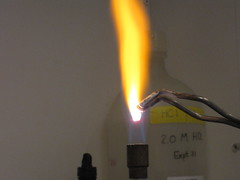
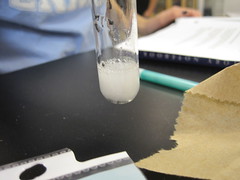
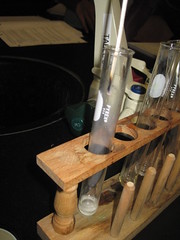
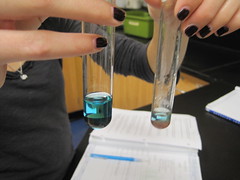
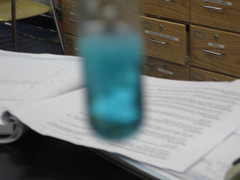

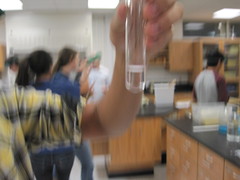
No comments:
Post a Comment